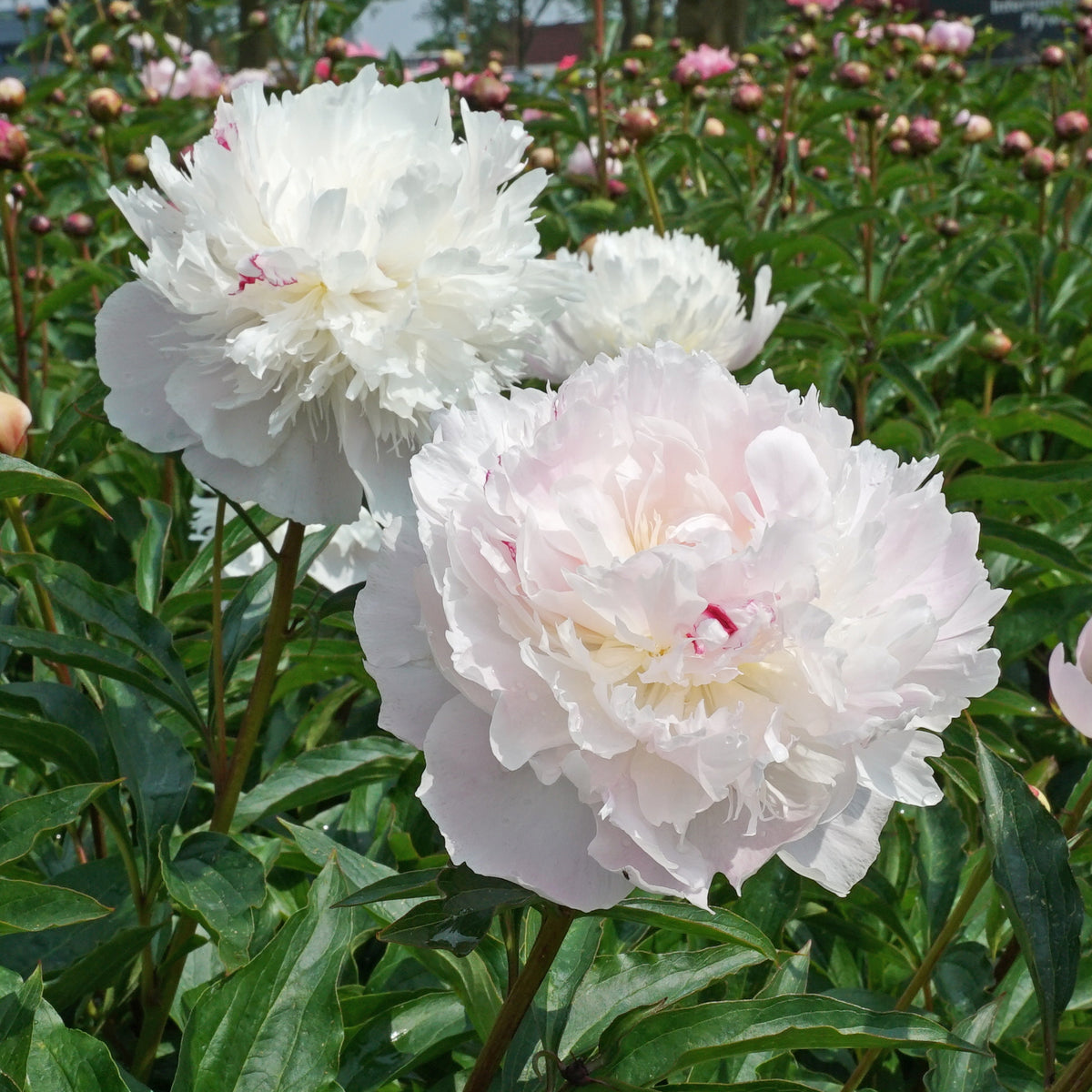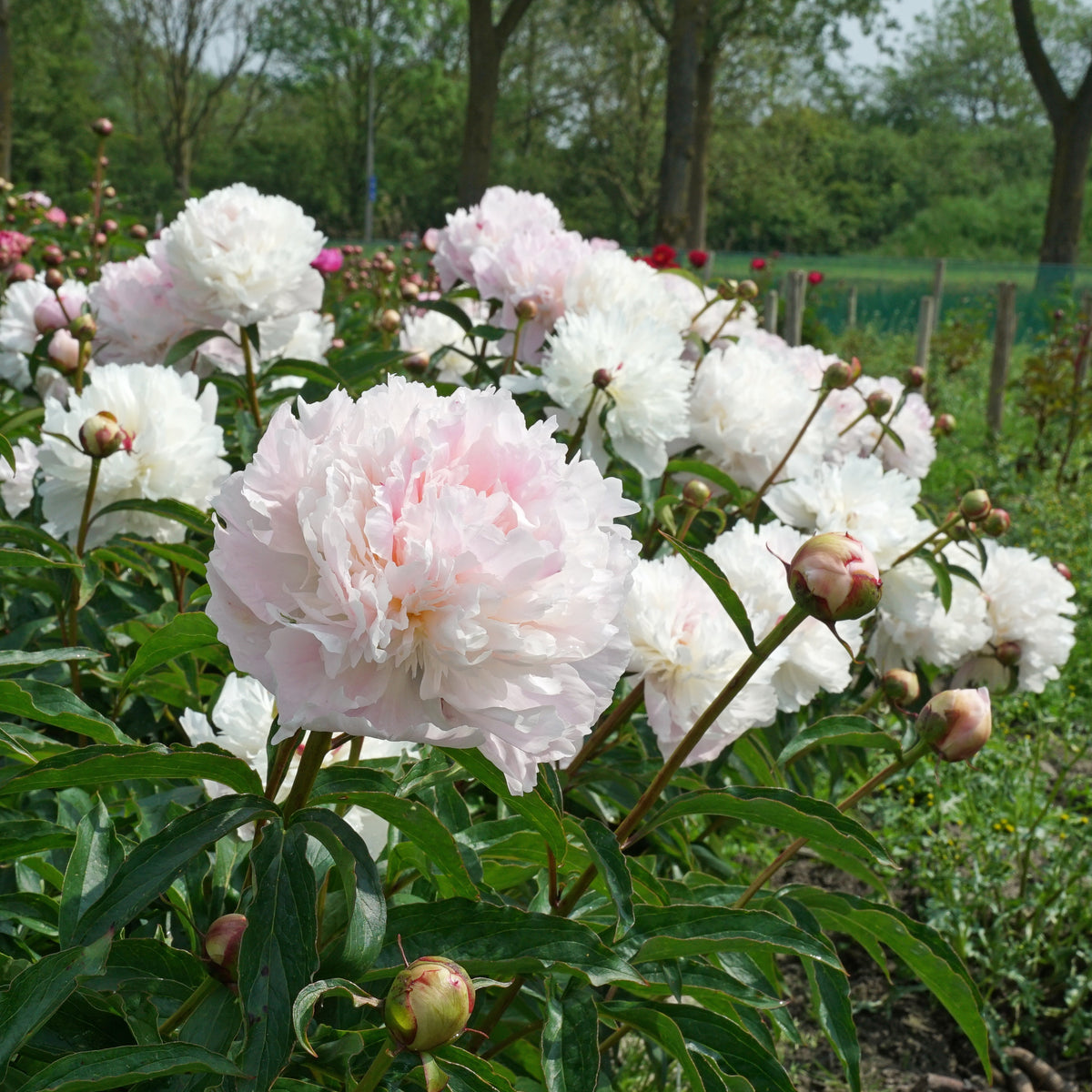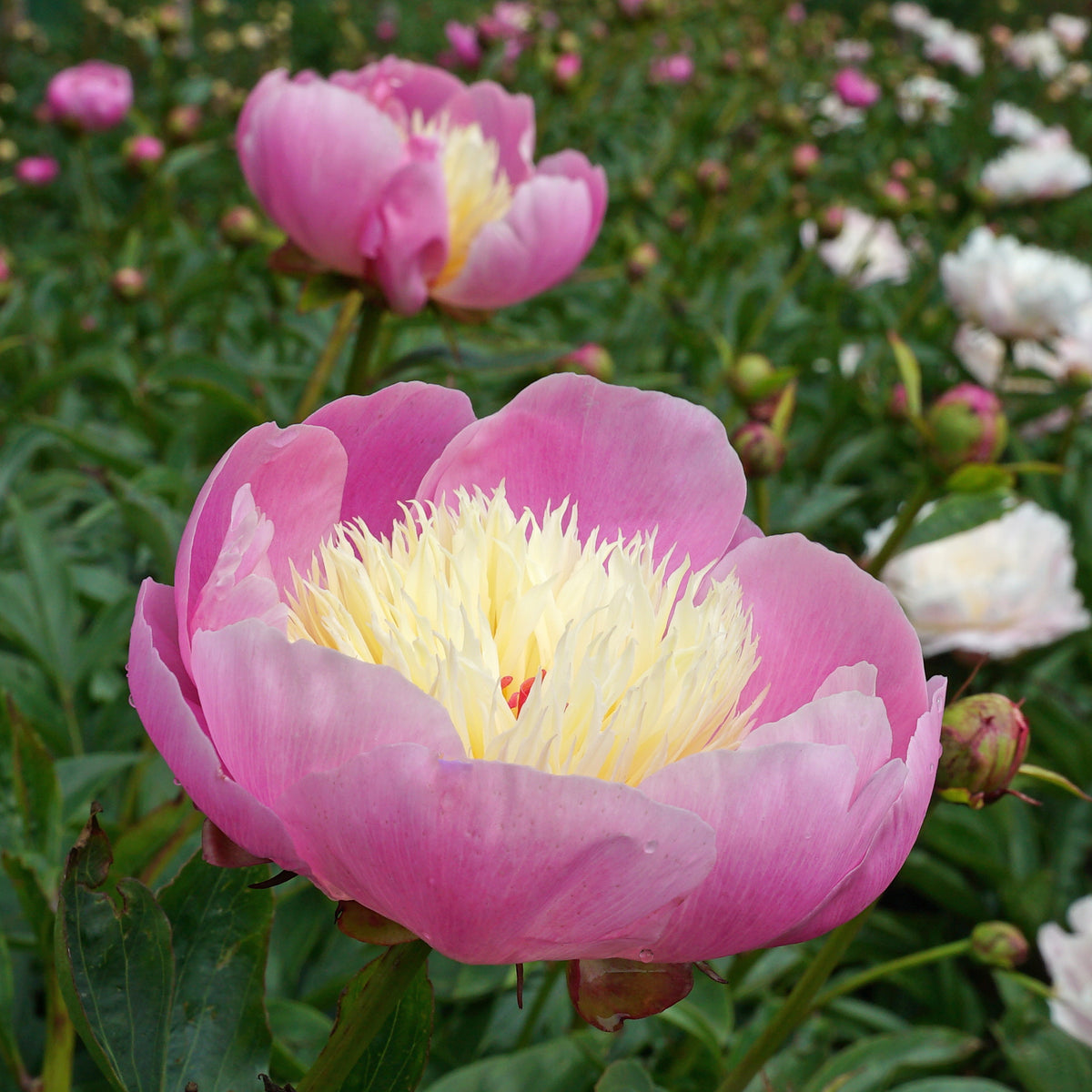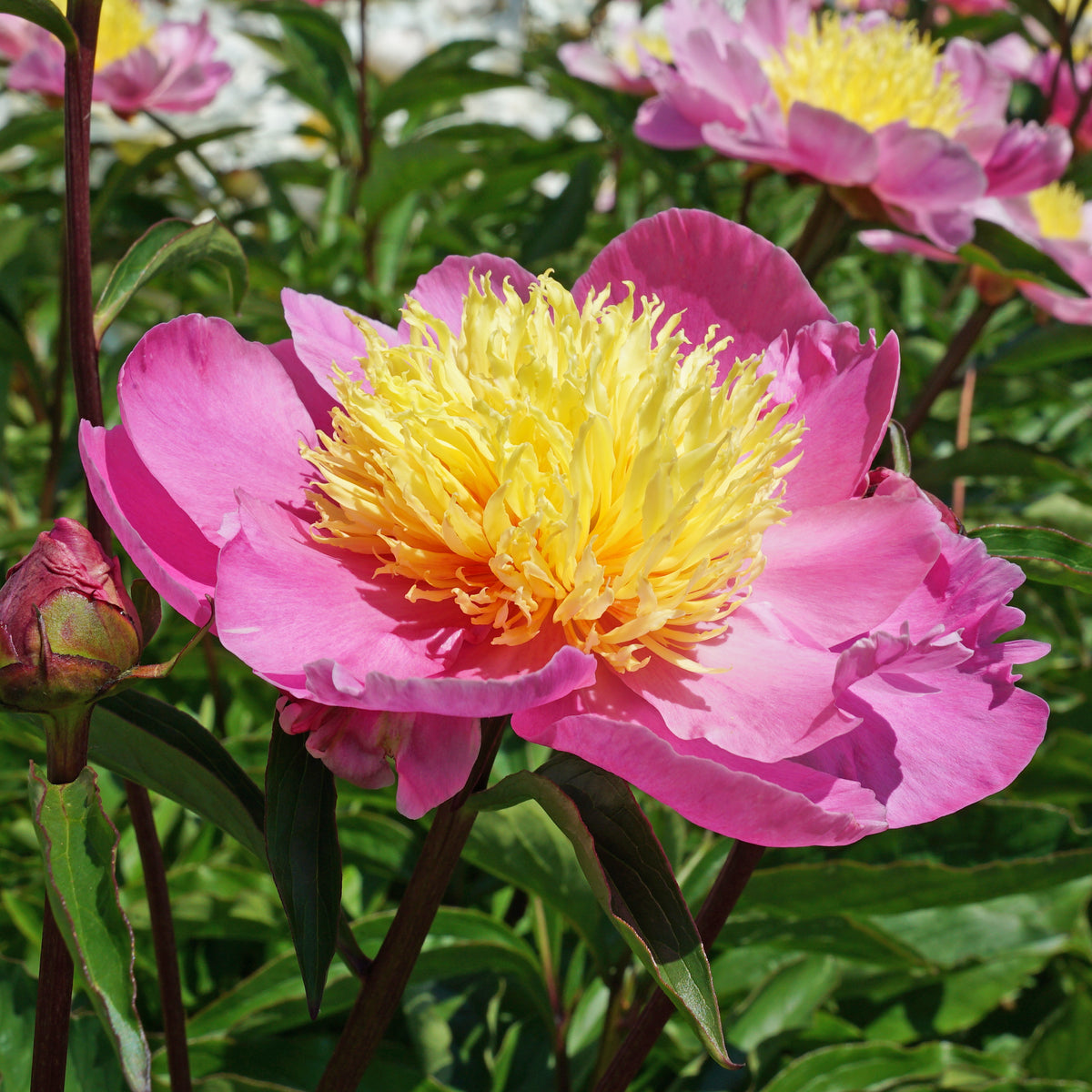
- Plant the peony 2 centimeters deep with the noses pointing upwards, definitely not deeper.
- Plant the Peony in a spot in the garden where it will receive full sun for at least half a day.
- Plant the Peony in a nutritious garden soil with sufficient organic material.
- The Peony is a greedy plant; provide sufficient nutrition and water. A rich garden soil where your other plants also thrive is fine
- The first year after planting the peony remains on the small side, but in the second and third year it reaches full maturity.
The Peony, what do you get?
The Peony you receive from us is part of the root system of a Peony that was dug up in September. These Peony plants are often too large and unmarketable to be packed and shipped as a whole. They are carefully cut by hand into manageable pieces, with the largest pieces with 3 to 5 “eyes” being delivered to us. These “eyes” are also called “noses” or “sprouts” and are the growth points from which the new stems and flowers will grow next spring. Smaller pieces with 2 or 3 eyes are sometimes also sold, but are less strong and will produce a smaller plant.
The Peony Plants
Plant the Peonies as soon as possible after delivery. A Peony is a perennial plant and feels most at home in the ground. When planting the Peony, make sure that the growing points are neatly upwards and that there is no more than two centimeters of soil on top of the noses . Planting too deep will give a considerably smaller plant with fewer or even no flowers, especially in the first year. Really think about this, planting too deep is the most common mistake.
Where do you plant the peony?
Plant the Peony in an open place in the garden where it will be in the sun for at least half a day. Never plant a Peony in a place where a Peony has previously stood, as it will do moderately to poorly there. The cause is attributed to a substance that the Peony secretes to prevent Peony seeds from germinating near the plant. Another theory is that the predecessor has used too many essential nutrients from the soil for the Peony. The Peony likes a humus-rich soil, be generous with compost or other organic fertilizers.
You can order two different types of Peonies from us: The Lactiflora Peonies and the Itoh Peonies, below is an explanation.
The Peony lactiflora
The Paeonia lactiflora is the Peony as many of us already know it. It is the common Garden Peony and the lactiflora is also the Peony whose flowers are offered in flower shops in late spring.
By far the most Peonies on our site are of this type. Originally it comes from the Far East and has been found in European gardens since time immemorial. A reliable garden plant that lasts a lifetime and makes few demands on location and soil type as long as it is in the sun for at least half a day and gets enough nutrition and water.
The Peony Itoh
The so-called Itoh Peony, also called intersectional Peony is much newer. It was bred around the fifties by the Japanese Mr. Toichi Itoh. This man made a cross between two Peonies from different sections in the Peony family; The Paeonia lactiflora and the Paeonia suffruticosa which is better known as the tree peony. The Paeonia suffruticosa is more of a deciduous shrub, during the winter period a leafless woody growth remains above the ground. Among the seedlings from this cross, of which it seems that Mr. Toichi Itoh himself never saw them bloom, were Peonies that grew just like the Paeonia lactiflora and were ideal for garden planting. They overwinter just like the lactiflora Peonies underground and get through the winter without any problems. They show a fantastically beautiful plant with graceful leaves and large flowers in new colours that we do not yet know in the regular Peonies. Officially this type of Peony is called 'intersectional' (after all it is the product of a cross between two Peonies from different sections in the Paeonia family) but as a tribute to the much too early deceased Mr. Itoh most Peony lovers call them 'Itoh' Peonies. They are different from the type of Peony we are used to but are certainly just as reliable in the garden and naturalize just as well as the regular Peony. The leaves are finer, have a softer appearance which makes them appear more graceful. The flowers are larger and the leaves stay green longer in the fall and they show beautiful fall colors as they die. Itoh Peonies are a bit more expensive, are not yet grown on such a large scale as the lactiflora Peonies, but are certainly worth a try.

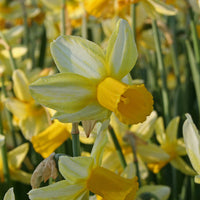



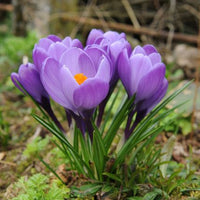




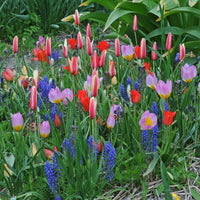


 Deutsch
Deutsch English
English